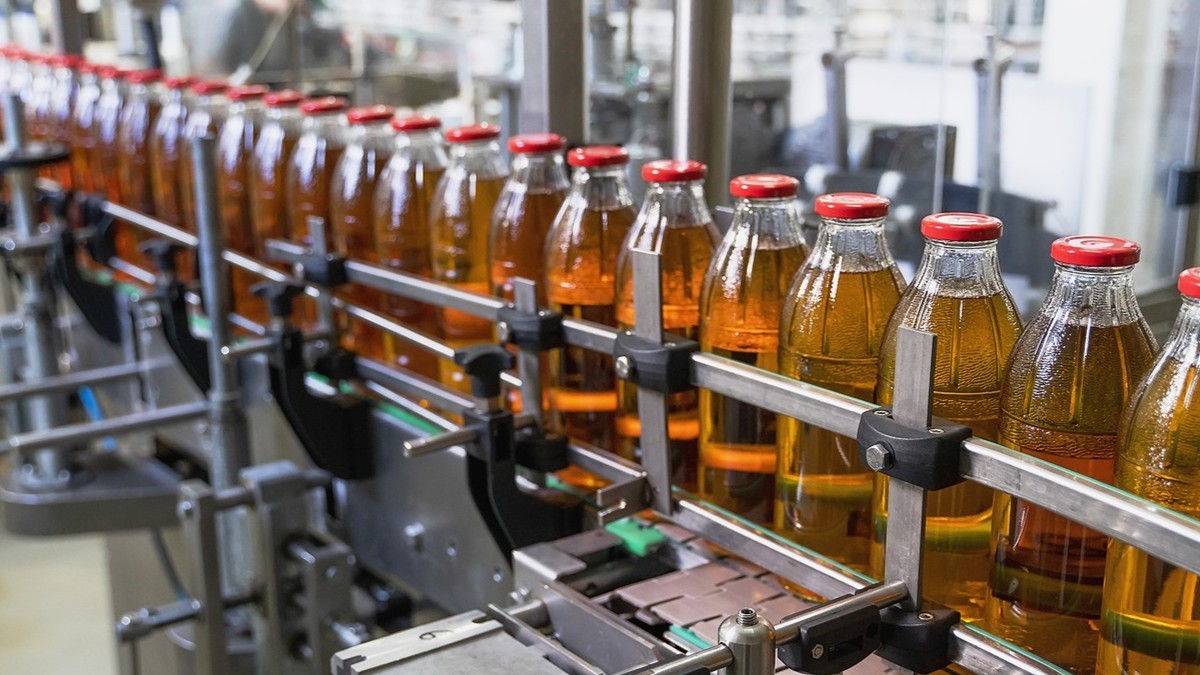Top Ten Tech Industry Trends in 2022
The science and technology industry is a rapidly changing market. The ability to continue research and development, innovation, and provide value will determine the future of the tech market. Let's understand the trend of the science and technology industry.
Published: Jan 03, 2022
The industrial revolution, the development of the Internet, and advancement in digital technology have all provided tremendous impetus to the global economy over the past few decades, and have driven the growth of various markets.
Top Ten Tech Industry Trends in 2022:
-
Active trending solutions will become the development trend of Micro/Mini LED displays:
There are still many technical bottlenecks in Micro LED technology that will need to be broken through, so overall costs will remain high in 2022. However, more and more upstream, midstream, and downstream manufacturers are investing in R&D in the Micro LED industry and actively expanding and establishing Micro LED production lines.
For Micro LED self-luminous display applications, TV products are currently some of the main products being developed to use Micro LED display technology. The main reason is that TVs have lower specification thresholds than IT products, so this is conducive to the development of Micro LED technology. With the launch of 110-inch commercial Micro LED passive displays in the market, it is estimated that the development of TVs below 88 inches for households will continue rapidly. Large-scale display, commercial applications will be extended to home applications, expanding the overall applications of Micro LEDs in the market.
In terms of Mini LED backlight display applications, in order to add new highlights to the display, brand manufacturers are pursuing a high contrast ratio that compares with the display effects of OLEDs. They want to increase the number of Mini LED backlight panels used. Therefore, the number of Mini LEDs used will increase by more than 10-fold compared with traditional backlight LEDs. The accuracy and production methods of Mini LEDs also needs to be improved. At present, Mini LED backlights are based on passive trending solutions. In the future, development will be toward active trending solutions, and the use of Mini LEDs will grow substantially. The performance and production capacity of Surface Mount Technology (SMT) printing equipment will also become a key factor for brand manufacturers.
-
AMOLED technology is further refined with a new look for mobile phones:
With technology gradually maturing for AMOLED, production capacity is increasing. In order to maintain the leading edge, first-tier manufacturers are trying to add more functions and specifications and are continuing to research and innovate to enhance the added value of AMOLED panels. One AMOLED process technology seeing continuous evolution is the folding design. It can be better optimized in terms of lightness and power-saving with the addition of the left and right folding design seen in the past, or with up and down folding to make the design closer to the current mobile phone style. In addition to the design, the pricing is close to that of mainstream flagship phones, so is expected to drive sales growth. Other attempts at folding types, including multi-folding, and reeling, are expected to be realized in the near future. According to market expectations, the penetration rate of foldable mobile phones will exceed 1% in 2022 and challenge 4% in 2024. With the installation of the LTPO backplane, power consumption problems arising from 5G transmission will be corrected, and high refresh rates are expected to gradually become the standard for flagship phones. After two years of development and adjustment, the off-screen lens module finally has the opportunity to be displayed on the flagship phones of many brands, and it is expected to realize a true full-screen phone.
-
The ushering in of foundry process innovation, and the introduction of FinFET and GAA technologies:
With semiconductor manufacturing processes gradually approaching physical limits, chip development must continue to improve performance, reduce power consumption, and reduce chip size through changes in transistor architecture and subsequent packaging technology or material breakthroughs. After the introduction of EUV lithography technology in 2018, 7nm foundry process technology ushered in new innovations. TSMC and Samsung have announced that they plan to introduce the 3nm process node in the second half of 2022. TSMC chose to continue the FinFET architecture for use in its 3nm production, while Samsung introduced the MBCFET architecture (Multi-Bridge Channel Field-Effect Transistor) based on Gate All Around (GAA) technology.
Compared with the three-sided cladding of FinFET, GAA is surrounded by the gate on four sides. The Source and Drain channels are replaced by Nanowire or Nanosheet with a fin-shaped three-dimensional layout structure to increase the contact area between the Gate and the channel and strengthen the gate's control over the channel. This effectively reduces the phenomenon of leakage. The first batch of 3nm products that are expected to be mass-produced in the second half of 2022 will focus on high-performance computing and smartphone platforms. These applications have higher requirements for improving performance, reducing power consumption, and reducing chip area.
-
DDR5 products will gradually enter mass production, and NAND Flash stacking technology will improve:
In terms of DRAM products, Samsung, SK Hynix, and Micron will gradually mass produce next-generation DDR5 products. With the stimulation of 5G mobile phone demand, they will continue to increase the market share of LPDDR5. The DDR5 increases speed to more than 4800Mbps, and the high speed and low power consumption characteristics greatly optimize the computing quality. As Intel’s begins mass production and releases new CPU platform servers, it is estimated that it will supply 10-15% of the world’s total bit output by the end of 2022. In terms of the manufacturing process, suppliers have successively mass-produced 1 alpha nm process products using EUV technology, and the market scale and application areas have gradually increased and expanded.
The number of NAND Flash stacking layers has not yet faced a bottleneck. It will move to technology with more than 200 layers in 2022, and the single-chip capacity will remain at 512Gb/1Tb. In terms of storage interface, PCIe Gen4 penetration rate in the PC consumer market will see substantial growth in 2022. The server market with the mass production of Intel Eagle Stream, enterprise SSDs will be further upgraded to support PCIe Gen 5 transmission, compared to the previous generation Gen4. The transmission rate has been doubled to 32GT/s, and the mainstream capacity has also been expanded to 4/8TB to meet the high-speed computing needs of servers and data centers. This will also help single-machine capacity to rapidly increase in this field. Related process technology continues to improve and breakthroughs and the efficiency and quality of the process are also improved.
From the perspective of the server market, the flexible price strategy of data centers and the diversification of services have directly driven the demand for cloud applications in the past two years. Workers are gradually replacing the business model of traditional server brand factories, and the business models of existing brand factories will face structural transformations, such as providing leasing services and cloud assistance for one-stop solutions. This change also means that corporate customers rely on more flexible and diversified pricing methods, as well as hedging in the face of uncertainties in the general environment. In particular, due to the epidemic in 2020, the transfer of work models has been accelerated, and lifestyles have changed significantly. It is expected that by 2022, the demand for servers in ultra-large-scale data centers will account for about 50%; and the ODM Direct foundry model will allow shipments. The proportion has grown by more than 10%.
-
5G expands the proportion of stand-alone (SA) network slicing and low-latency applications:
Global telecom operators are actively launching 5G stand-alone networking (SA) architecture as the core network needed to support various services, accelerating the construction of base stations in major cities, and diversifying network services based on network slicing and edge computing to provide end-to-end quality assurance. Enterprise demand in 2022 will promote the integration of 5G with Massive IoT and Critical IoT applications, including more network endpoints for data transmission, such as smart factory light switches, sensors, and temperature readings. The key Internet of Things covers smart grid automation, remote medical care, traffic safety, and industrial control, etc. It also combines industry 4.0 cases to provide asset tracking, predictive maintenance, on-site service management, and optimized logistics processing.
The epidemic has forced digital transformation of enterprises and changes in personal lifestyles, once again highlighting the importance of 5G deployment. Operators will compete through network slicing functions. Due to the development of 5G private networks, open RAN, unlicensed spectrum, millimeter waves, etc., a multi-party ecosystem has emerged to traditional operators. The system also includes participants from OTT, cloud, social media, and e-commerce, making it an emerging service provider. In the future, operators will actively build 5G enterprise applications and explore new business models for dedicated 5G networks in industrial environments to continue to consolidate market competitiveness.
-
Low-orbit satellites have become a new trend for global satellite operators:
The 3rd Generation Partnership Project 3GPP was released for the first time and included the Non-terrestrial Network (NTN) communication technology for the first time. As part of the 3GPP standard, it is a very important development for the mobile communications industry and the satellite communications industry. In the past, mobile communications and satellite communications were two independently developed industries, so the upstream, midstream, and downstream vendors involved in both industries at the same time were different. However, since 3GPP incorporated into NTN, the two industry chains have had more opportunities for interaction and cooperation, and they are expected to build new industrial patterns.
United States has the largest number of low-orbit satellites actively deployed, and global satellite launches made by US operators accounts for more than 50% of the world launches. Low-orbit satellite communications emphasize that the signal coverage is not restricted by terrain, such as mountains, seas, deserts, etc., and can be complementary to mobile communications by 5G. With 5G, 3GPP Rel-17, and application of the NTN plan, it is expected that the output value of the global satellite market will increase significantly in 2022.
-
Digital Twin and Meta-Universe applications for the Smart Factory:
With the post-epidemic new normal being an increase in the demand for activities to be non-contact, digital information transfer through the Internet of Things is increasing. In 2022 will be put on strengthening the Cyber-Physical System (CPS) to combine 5G, edge computing, AI, and other tools to extract valuable data for analysis. To achieve intelligent autonomous calculations, CPS and Digital Twin are being used in key vertical fields such as smart manufacturing and smart cities. They can simulate design and production processes, and can be used as monitoring keys to assist decision-making.
With the increasing complexity of the real environment, the demand for Digital Twin technology will increase. Remote operations such as 3D sensing, VR/AR, and IoT management technology will increase next year. Virtual space and Metaverse framework development will increase, with a view to mirroring the physical world more intelligently, and help smart factories with field applications.
The meta-universe is mainly to explore a decentralized online three-dimensional virtual environment. This virtual environment will allow the user to enter the artificial virtual world through virtual reality glasses, augmented reality glasses, mobile phones, personal computers, and electronic game consoles. This will also drive technological innovations such as in the sensing and collection of information such as from vision, acoustics, and the environment, etc. Accurate analysis and computing by the platform, and AI using blockchain technology can ensure data credibility.
-
AR/VR creates a comprehensive immersive experience:
The epidemic has changed people's life and work conditions. This has increased companies' willingness to invest in digital transformation and new technologies. As a result, the adoption rate of new types of AR/VR applications such as virtual meetings, AR remote collaboration, and simulation design has also increased. Game applications and various remote interactive functions brought by virtual communities will also become important applications for manufacturers to develop for the AR/VR market. Therefore, with the adoption of low-cost hardware strategies and increased acceptance of application contexts, the AR/VR market will see a significant expansion in 2022. This will prompt the market to pursue more realistic AR/VR effects.
Software tools can create more realistic image application services and assist with AI calculations. Various types of sensors, such as eye-tracking sensors, can provide more realistic data for virtual responses. Some tactile feedback effects can even be provided on hardware such as controllers or wearable devices to enhance the user's sense of immersion.
-
Automated Valet Parking (AVP) becomes an autonomous driving solution:
Autonomous driving technology will be realized in a very lifelike way. It is expected that Automated Valet Parking (AVP), a function of SAE Leve4, will become an important option for high-end cars with automatic driving functions starting in 2022. International standards are also being formulated, which is promising for the development of this function.
The AVP function will vary depending on the vehicle's equipment, resulting in fixed/non-fixed routes, private/public parking spaces, and other scene restrictions. The conditions of the parking lot will also affect the availability of AVP, including the integrity of the markings and the networking environment. When this function is implemented, the distance between people and cars is set to local regulations. Since the routes followed by each car are different, the settings can be set according to the calculation made by the car, and the parking route can be generated by cloud computing. However, cloud computing needs a good networked environment to be able to execute. As automatic driving scenarios increase, high-precision map matching applications will be used which will also affect the application of automatic parking. There are many AVP solutions being developed at this time, which will drive interest in the automatic driving market.
-
Third-generation semiconductor development is heading towards 8-inch wafers and new packaging technologies:
As more and more countries plan to gradually ban the sale of petroleum powered vehicles from 2025 to 2050, global sales of electric vehicles will accelerate. This will increase the market share of silicon carbide (SiC) and Gallium nitride (GaN) components and modules. The demand for energy conversion and terminal applications such as 5G communications is growing rapidly, driving the third-generation semiconductor market. SiC and Si substrate material required for the production of third-generation semiconductors is seeing a sales boom. However, due to the relatively limited production and R&D of current substrates, the current supply of SiC and GaN wafers is unstable and still limited to 6-inch wafers. The capacity of Foundry and IDM factories has also not been able to meet demand for a long time. Substrate suppliers are actively making plans to increase production capacity, and increase the area of SiC and GaN wafers from six inches to eight inches in 2022. They hope to gradually alleviate the gap in the third-generation semiconductor market. Foundries and IDM manufacturers will release a new generation of SiC energy-saving devices as well as Copper Flip Chip package structures for the telecommunications industry. The supply chain of the semiconductor industry is constantly innovating and making breakthroughs as the market changes, as well as creating a new era with other electronics or communications industries.
Published by Jan 03, 2022
Source :technews





.jpg)








